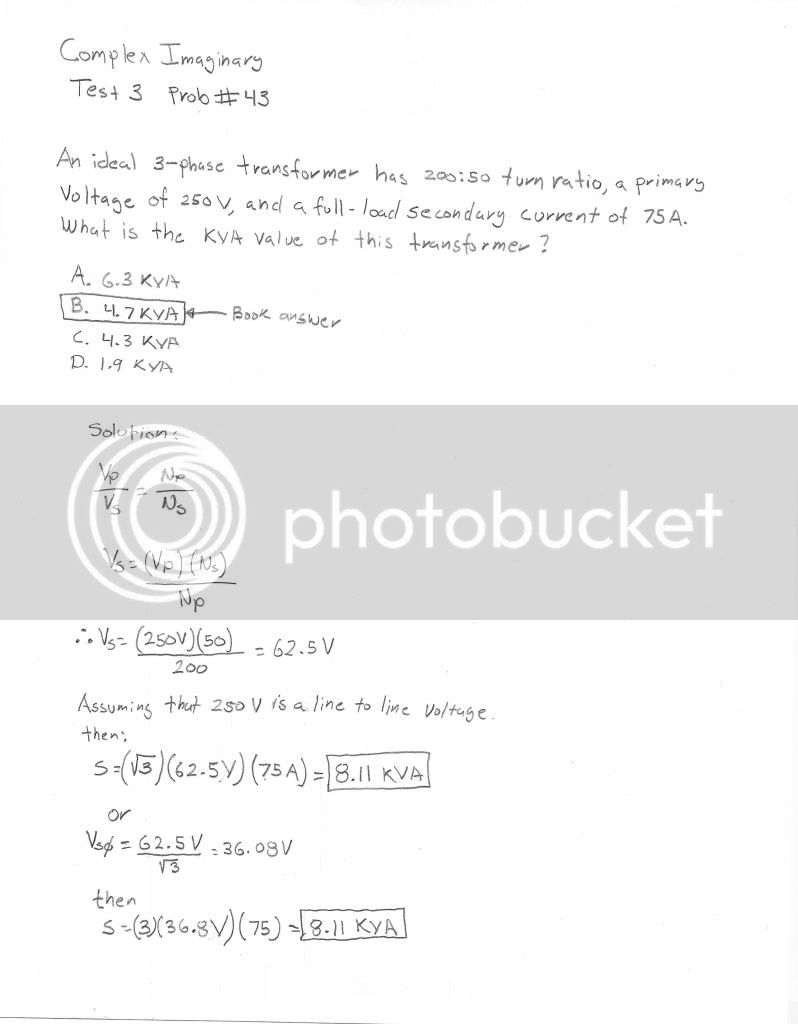Wildsoldier PE
Well-known member
- Joined
- Aug 19, 2010
- Messages
- 290
- Reaction score
- 14
I think there is an error in this problem what do you all think?




The only problem is they came to the 4.7kVA answer without multiplying by square root of 3. They got to that answer by multiplying the secondary voltage by the secondary current only. Seems they stated that it was an ideal 3-phase transformer but used single phase transformer calculation instead.Try this version: Say the winding configuration is Y - Δ and each transformer has the 4:1 turns ratio as given (assume you are using three 1Φ transformers to make a 3Φ bank). Assume the input line voltage is 250V, therefore primary winding voltage is 250/√3 = 144V. This gets converted to a 144/4 = 36V on the Δ secondary winding (which is the line voltage on that side. Then assume that the load current is the 75A as given (this makes sense, it would be unusual in practice to be given a winding current, you would more likely know the load current). Now the total power is *poof* ... P = √3 * 36 *75 = 4.7 kVA. Yea, I know this took a lot of assumptions that were missing from the problem statement... but IMHO it is a more relevant problem...
Enter your email address to join:
